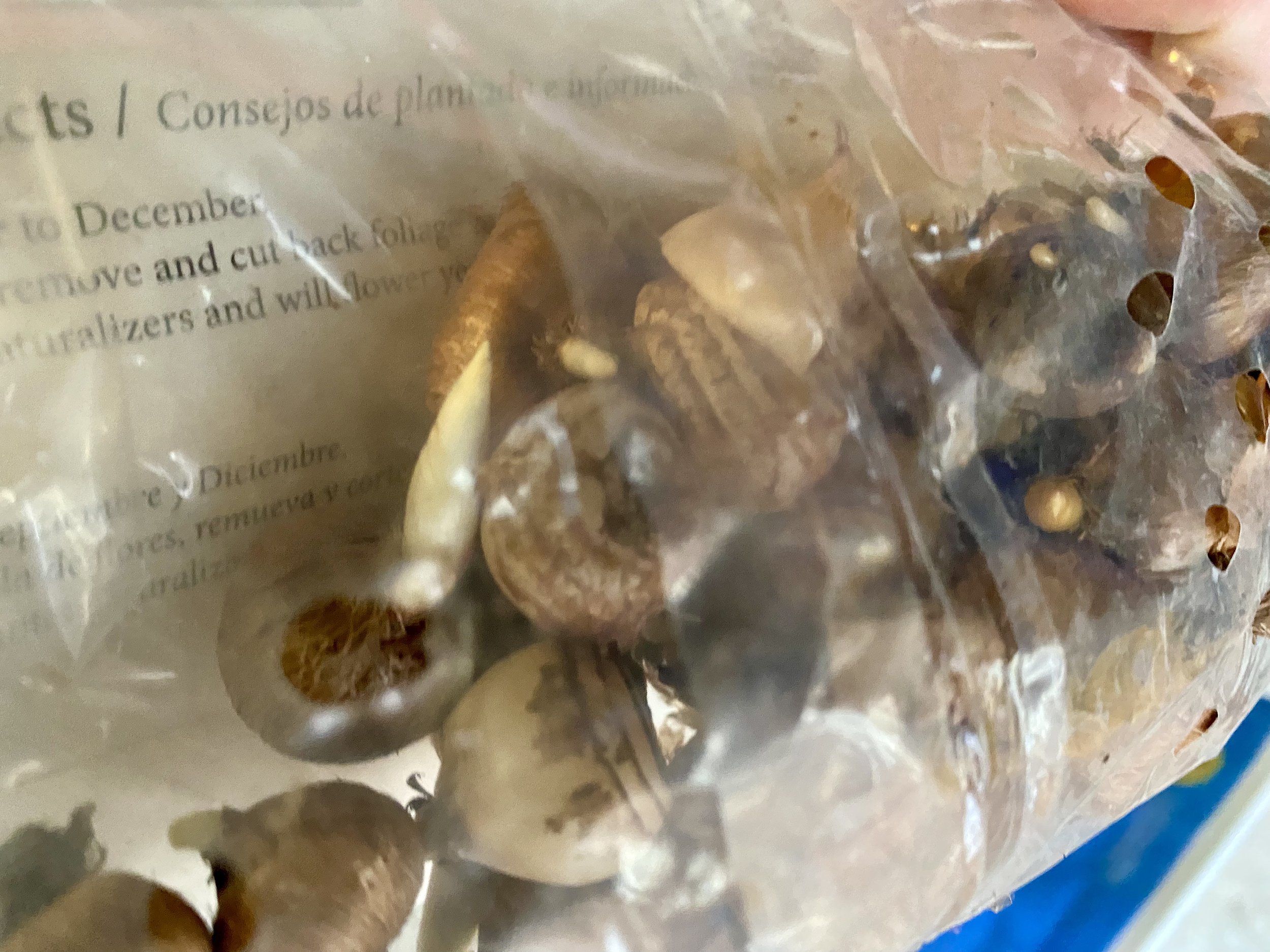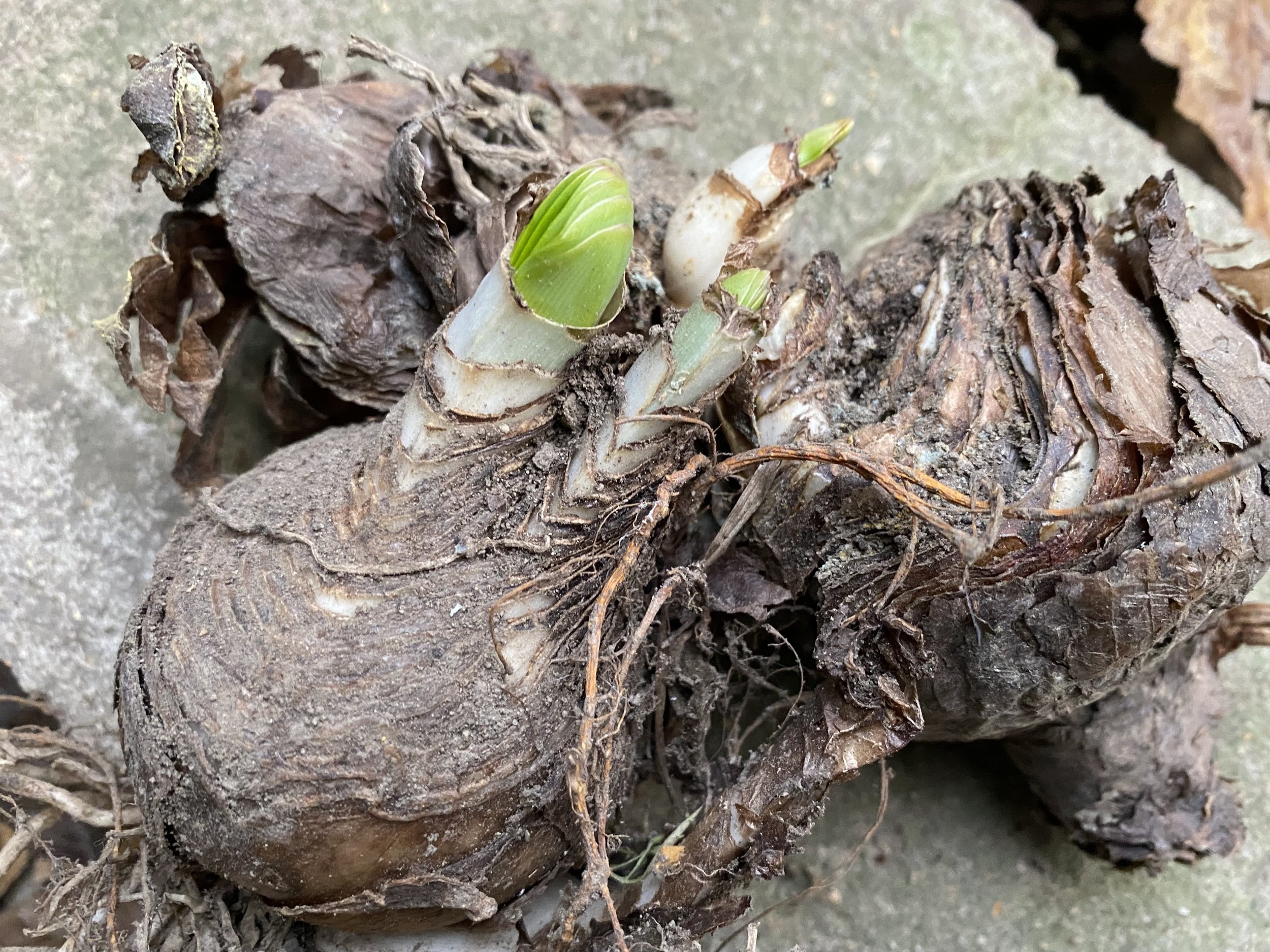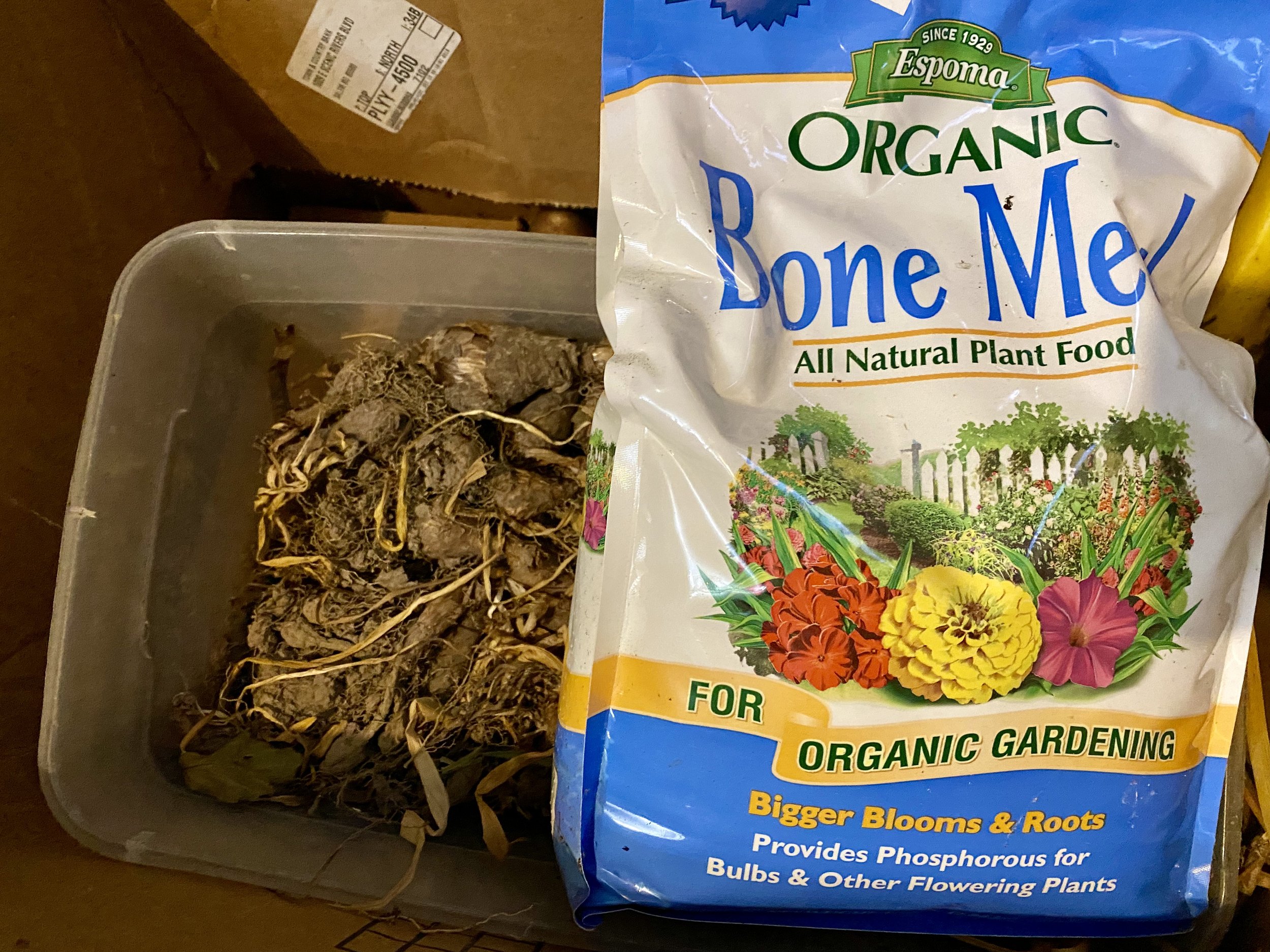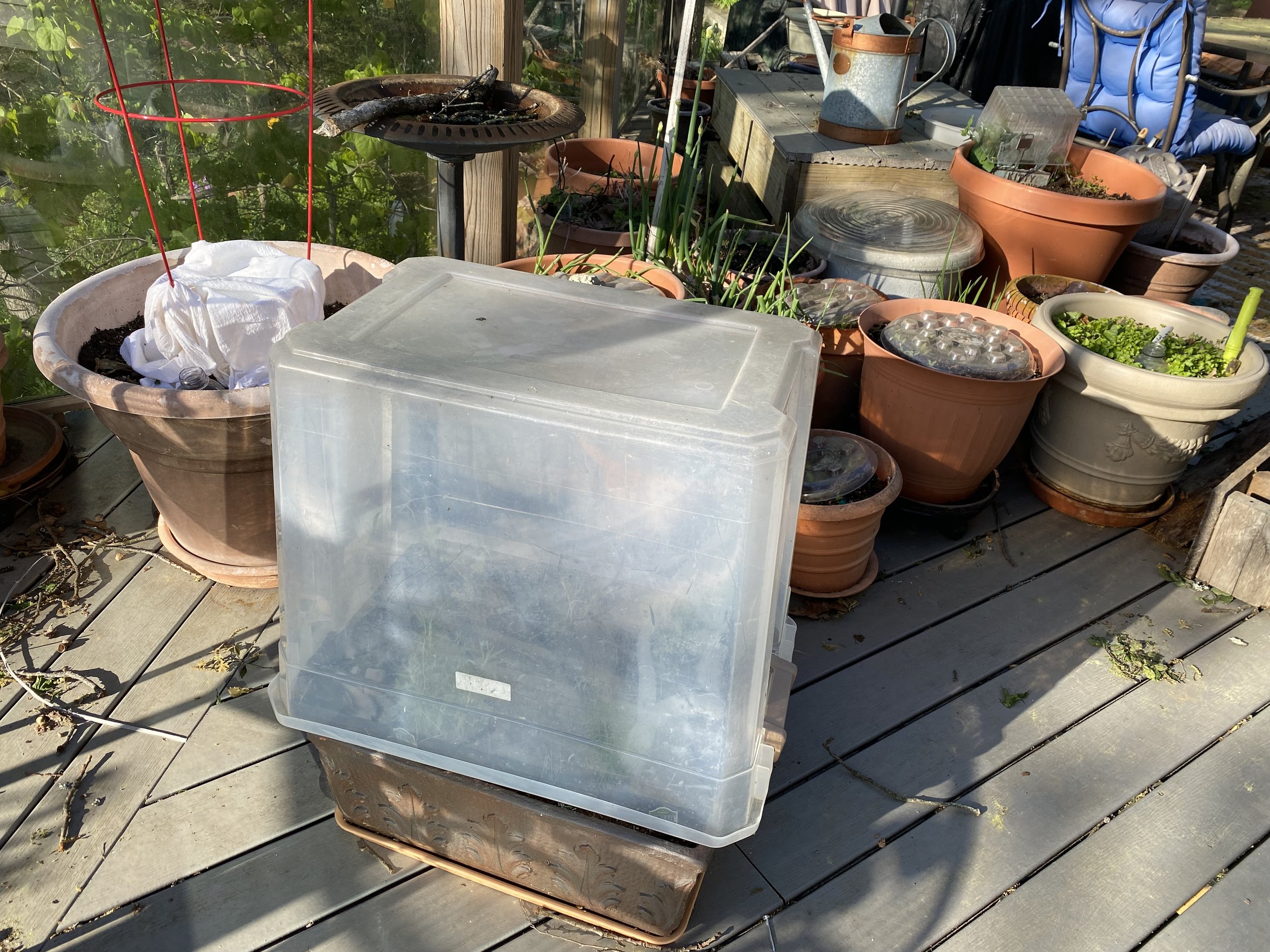Planting Bulbs
/One of the few bulbs I plant every year, crocus are a harbinger of spring, (Photo by Charlotte Ekker Wiggins)
Planting Bulbs
Thank goodness for warm weather in USDA Hardiness zone 5. Although it is unusual, it does give me extra time to get some spring bulbs into the ground.
Bulbs collect sun energy through leaves and store it in the bulbs. A majority of bulbs are planted in the fall so they can be exposed to cold temperatures. The cold resets them so as soon as the spring warms up the ground the bulbs start to grow with first blooms, then green leaves.
This time of year you can find spring-planting bulbs on sale. Look for the signs of growth starting. Some bulbs may be dry by now and won’t grow.
When choosing bulbs on sale, make sure to see growth starting. (Photo by Charlotte Ekker Wiggins)
Now in my garage I have a couple of boxes of mixed daffodils and surprise lilies that i still need to plant. They won’t winter over so they need to find a home next week.
The surprise lilies look dead but a little pawing through the bulbs finds some getting a head start. That’s why I don’t toss much out and plant them instead, they all deserve a chance to survive.
Don’t toss out brown bulbs, they are saving energy for growth. (Photo by Charlotte Ekker Wiggins)
One of the products I do add to my fall bulb planting is bone meal. Bone meal will feed the bulb roots as they start to grown and settle in getting ready for spring growth. It doesn’t have to be an organic brand; I found these on deep discount at a local farm and garden center going out of business.
Add bone meal when planting bulbs, it helps feed them as they store energy. (Photo by Charlotte Ekker Wiggins)
Although I love tulips, I rarely plant those because the local wildlife like to snack on them.
Daffodils are toxic so they survive the onslaught and keep multiplying from year to year. They do need to be dug up and spread out every once in awhile but they are easy to plant and give back for many years.















